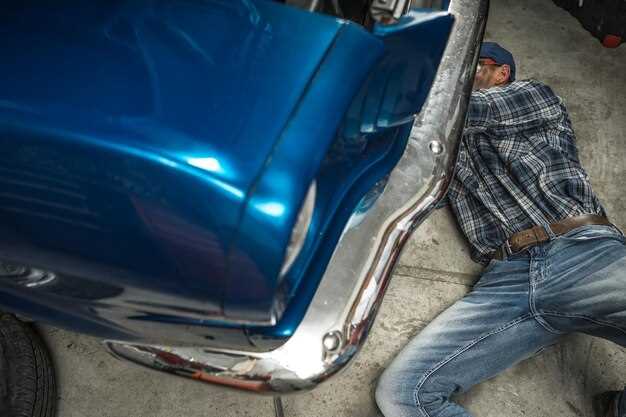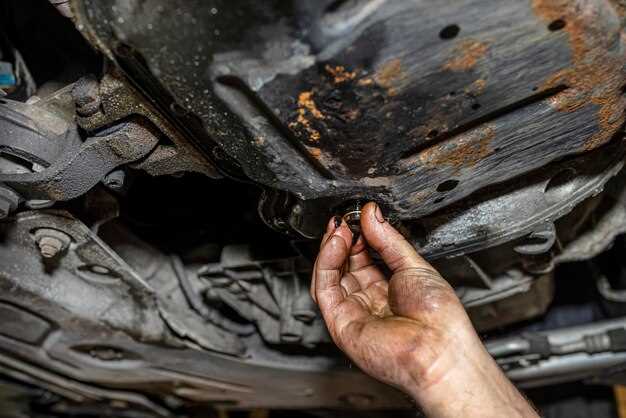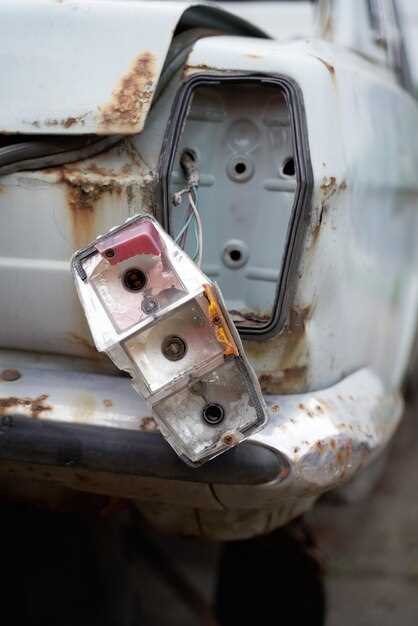
The beauty of a muscle car lies not only in its powerful engine but also in its sleek design and finish. However, one of the most common threats to maintaining this beauty is rust. Over time, exposure to moisture and road salt can lead to severe corrosion, compromising both the integrity and appearance of your cherished vehicle. Understanding the importance of protection against rust is essential for every muscle car enthusiast.
Rust forms when metal is exposed to oxygen and moisture, creating a reaction that leads to the deterioration of the surface. This not only affects the aesthetics of your car but can also lead to costly repairs if left unchecked. Fortunately, there are several simple yet effective strategies that you can implement to safeguard your muscle car from rust and prolong its life.
In the following sections, we will explore practical tips on how to protect your muscle car from rust damage. From regular maintenance routines to protective coatings, these insights will help you keep your vehicle in pristine condition. With the right care, you can ensure that your muscle car remains a stunning tribute to automotive engineering, free from the grips of rust.
Understand the Causes of Rust on Muscle Cars
Rust formation on muscle cars primarily results from the interaction between moisture, oxygen, and metal surfaces. One of the main culprits is water, which can accumulate in various areas of the vehicle, especially during rainy seasons or snowy months. If left unaddressed, this moisture can lead to the oxidation of metal components, resulting in rust.
Another major factor contributing to rust development is salt. In regions where roads are salted during winter, the sodium chloride can stick to the undercarriage and other exposed parts, accelerating the corrosion process. This is particularly concerning for classic muscle cars, which often have less protective coatings compared to modern vehicles.
Additionally, the presence of dirt and grime can trap moisture against the car’s surface, further promoting rust. It is essential to regularly clean your muscle car to prevent debris from creating a moisture-retaining environment. Insufficient protection, such as neglecting to apply protective wax or sealants, leaves the paintwork vulnerable and can lead to more severe rust issues.
Lastly, environmental factors such as humidity and temperature fluctuations can worsen rust conditions. A high-humidity environment makes it easier for water to condense on metal surfaces, while drastic temperature changes can create thermal expansion and contraction, leading to micro-cracks in protective coatings.
Understanding these causes is crucial for effective rust protection. By regularly inspecting and maintaining your muscle car, including the application of protective coatings and timely cleaning, you can significantly reduce the risk of rust formation and preserve the vehicle’s integrity.
Choose the Right Protective Coating for Your Vehicle

Protecting your muscle car from rust is essential for maintaining its value and appearance. Choosing the right protective coating can significantly enhance your vehicle’s longevity. Here are some effective options:
- Wax: A natural or synthetic wax provides a barrier against moisture and contaminants. It is easy to apply and offers excellent shine.
- Sealants: More durable than wax, sealants are synthetic products that bond to the paint. They offer long-lasting protection against rust and are ideal for everyday use.
- Ceramic Coatings: These high-tech coatings create a strong, hydrophobic surface that repels water. They provide superior protection against environmental factors and potential rust.
- Undercoating: Applying a protective layer to the undercarriage can prevent rust from road salts and moisture. There are various types, including rubberized, asphalt-based, and oil-based options.
- Rust Inhibitors: Products specifically designed to prevent rust can be sprayed or brushed onto exposed metal areas. They create a protective film that reduces oxidation.
Consider the specific needs of your vehicle and choose a coating that suits its usage and exposure conditions. Regular maintenance of the chosen protective coating is crucial for optimal effectiveness.
- Ensure the surface is clean and dry before application.
- Follow the manufacturer’s instructions for optimal results.
- Regularly inspect the coating and reapply as necessary to maintain protection against rust.
Investing time in selecting the right protective coating and performing routine maintenance will go a long way in preserving your muscle car from rust damage.
Implement Regular Washing and Waxing Routines
One of the most effective ways to protect your muscle car from rust is to establish a consistent washing and waxing routine. Regular washing removes dirt, grime, and other contaminants that can lead to corrosion. Road salt, especially in winter months, is notorious for causing rust damage, so it’s essential to clean these residues off your vehicle as soon as possible.
Using a high-quality car soap and a soft sponge or microfiber cloth, you can safely wash the exterior without scratching the paint. Make sure to pay attention to hard-to-reach areas, such as the wheel wells and undercarriage, where moisture can accumulate and promote rust formation.
After washing, applying a protective wax layer is crucial. Wax acts as a barrier against the elements, shielding your car’s paint from moisture and UV rays. Choose a synthetic wax for long-lasting protection, and apply it every three months for optimal results. This routine creates a strong shield, minimizing the risk of rust development.
In addition to aesthetics, maintaining your car with regular washing and waxing significantly increases its longevity and preserves its value. The simple act of caring for your muscle car not only combats rust but also ensures that it stays in peak condition for years to come.
Inspect and Repair Any Paint Chips or Scratches
Regularly inspecting your muscle car’s exterior is critical for effective protection against rust. Even the smallest paint chips or scratches can expose the underlying metal to moisture and air, facilitating rust formation. Make it a habit to thoroughly examine the painted surfaces, particularly around high-wear areas such as the front bumper, wheel wells, and door edges.
Once you identify any damage, prompt repair is essential. Start by cleaning the affected area with soap and water to remove dirt and debris. Next, dry the surface completely. For minor chips, use touch-up paint that matches your car’s color. Apply it carefully, ensuring an even coat that covers the exposed metal. For deeper scratches, consider using primer before applying the topcoat to enhance adhesion.
After the paint has dried, finish with a clear coat to enhance durability and sheen. This step not only improves appearance but also adds an extra layer of protection against the elements. Regular maintenance of your car’s paint finish will help keep rust at bay and ensure your muscle car remains in pristine condition for years to come.
Utilize Rust Inhibitors in Vulnerable Areas

One effective method for protecting your muscle car from rust is the application of rust inhibitors in particularly vulnerable areas. These areas often include wheel wells, undercarriages, and seams where moisture is likely to accumulate.
Rust inhibitors work by creating a barrier that prevents moisture and oxygen from reaching the metal surfaces. It is essential to choose a high-quality rust inhibitor that is specifically designed for automotive applications. Look for products that offer long-lasting protection and are resistant to harsh weather conditions.
Before applying a rust inhibitor, ensure that the surfaces are clean and dry. Remove any existing rust and debris, as these can compromise the effectiveness of the protection. Once the area is prepped, evenly apply the inhibitor, paying special attention to crevices and joints where rust may develop more readily.
Regular inspections should follow the application of the inhibitor to identify any potential issues early. Reapply the rust inhibitors annually or as recommended by the manufacturer to maintain optimal protection. This proactive approach will significantly reduce the risk of rust, preserving the integrity and appearance of your muscle car for years to come.
Store Your Muscle Car Properly to Prevent Moisture Accumulation
Proper storage is essential for maintaining your muscle car’s condition and preventing rust caused by moisture accumulation. Here are key aspects to consider when storing your vehicle to ensure maximum protection:
| Storage Condition | Recommendations |
|---|---|
| Temperature | Store your muscle car in a cool, dry environment. Avoid extreme temperatures that can lead to condensation. |
| Humidity Control | Use a dehumidifier in the storage area to maintain a low humidity level, decreasing the likelihood of moisture buildup. |
| Covering | Invest in a breathable car cover that prevents moisture traps while protecting against dust and debris. |
| Cleaning | Thoroughly wash and dry your car before storing it. Remove any dirt or residue that can retain moisture. |
| Ventilation | Ensure adequate airflow in the storage space to help reduce humidity and prevent rust development. |
Following these maintenance tips will help protect your muscle car from rust and ensure it remains in prime condition. Proper storage is a key factor in the overall protection of your vehicle, preserving both its aesthetic and functional qualities.




